Advertising defines our times, though its origins are quite ancient. A spooky phenomenon, advertisements often last well beyond the thing they advertise, as can be seen on many of Barcelona’s walls.
The remains of the old commercial signs found in the city’s streets take us back to faraway times, despite the fact most are not included in the Urban Landscape Agency’s catalogue (whereas the Fructuós Gelabert magician’s sign on Carrer del Pas de l’Ensenyança and the Callicida Gras mural in Plaça de la Vila in Gràcia are). This route takes you on a journey past surviving signs, in danger of disappearing, whose modesty contrasts with their spectral appearance in the landscape.
As for neighbourhoods, we ought to start with the Raval, at the old factory-house of the Magarola brothers on Carrer dels Tallers, 22, which housed the Hijos de Esteban Bachs store from 1881 until very recently and whose sign remains at the entrance: “Papeles Bachs. Papeles, cartones y sus anexos” [Paper, cardboard and their products]. A place where young art students used to go in search of old paper. Further along, on the same side of the street, you will see the half-rubbed-out letters of the famous El Siglo department store, which moved to Carrer de Pelai after a fire on the Rambla. And above the door at number 16 you will find an announcement for the Laboratorio Químico Médico Pelayo, which still manufactures medical and dental materials. A stone’s throw away, on Riera Alta, 44, you will find an advertisement for the Pérez Ares wood store decorating part of the facade. And at Sant Antoni Abat, 13, you can see an advertisement for a 19th-century shoe shop: “Grandes y variadas existencias. Especialidad en últimos modelos” [Large and varied stock. Specialising in latest models]. Whereas you can see the red Muebles Padró advertisement at the junction between Carrer de l’Hospital and Plaça del Pedró, before the shop moved.
Not all adverts are recognisable at first sight. Inside the Boqueria market you can read an anonymous sign that says: “Ventas al por”. Though you can still make out the considerably worn-out advertisement on Carrer del Carme, 29, for the Ftes. de Naipes de España factory, the trade name for the Successors de Francesc Torras i Lleó firm (this element is particularly important, as it is the only record of one of Barcelona’s great industries, when the city was famous world-wide for the quality of its playing cards). If you go to Sant Rafael, 2, you can still see a cup on the facade of the old Tremoleda chemist’s, along with a snake and four opium capsules which someone has repainted red. What you can no longer see is the old advertisement for purgative syrup “Jarabe Duval, para el dolor del sistema nervioso” [for pain in the nervous system]: an act of vandalism committed with municipal indifference wiped out all trace of a product very popular since 1851, when it was marketed here along with the famous Licor de Cafè digestive and Tónico Vital.
If we cross the Rambla and search the Barri Gòtic we will find letters that have been painted over on Carrer de les Moles, on the house corner at the junction with Comtal (“La Industria. Instalaciones y reposiciones del alumbrado eléctrico. Timbres, teléfonos, fuerza motriz, calefacción”) [Industry. Installations and replacements of electrical lighting. Doorbells, telephones, motors, heating], although it is still legible when viewed against the light. And an advertisement for Relojes Portusach can still be seen at the entrance to the Espolsa-sacs alley, after which the passage was named for a number of years. Some advertisements refer to businesses that are still going to this day, such as the “Books” and “Select Antiques” lettering on Carrer de la Palla, 21, which belong to the old Àngel Batllé bookshop, one of the oldest in the city. Others speak of long-vanished businesses, such as a first-floor advert on Carrer del Cardenal Casañas: “J. Torrens. Calzado de mujer. Despacho Rambla de las Flores” [Women’s footwear. Office on Rambla de las Flores]. Or what can be seen above the Piera shop on the same road: “Posada Nueva del Progreso. Se sirve a cubiertos y a raciones” [Posada Nueva del Progreso. Dishes and portions served].
Some are no more than indecipherable shadows, such as the word “Herramientas” [Tools] on the building on Carrer de Ferran that opens to Passatge de Madoz and which could correspond to the Clausolles Paulet company, manufacturers of orthopaedic equipment and surgery tools. Much better preserved, by the doorway of a cultural centre at number 52 on Carrer d’Avinyó you can still read the letters announcing a “Taller escuela de artesanía” [Craft School and workshop] specialising in “Alfombras y tapices” [Rugs and tapestries]. And on the facade of 19, Carrer d’en Serra, you will find one of the most fantastic advertisements to have survived: “Cava Española. Vinos de mesa Pamies y Vallés, Priorato, Alella, Rioja y Valdepeñas. Anís y cognac, vinos de Jerez”, an advertisement that gives the low-down, in a flicker of an eye, on the drinking tastes of a whole era, when cognac was still something of an exotic drink.
Let’s walk over to the neighbouring road, Carrer Ample, where we’ll find a large “22” painted over a front door, a reminder of the local custom of enlarging the numbers on houses where a brothel was operating. Not far from there, at the Set Portes restaurant, you can read: “Antiguo café y billares”, the last sign of there once having been billiard tables at this establishment, where the great Carmen Amaya used to perform. An advertisement for an old boarding house remains in Placeta de Sant Agustí Vell: “Del Parque. Fundada en 1869”, on a building at the chamfer with Carrer del Portal Nou. Opposite – on the corner at the junction with Les Basses de Sant Pere – you can find a 19th-century advertisement for Bazar de Santa Margarita written in black letters, half-hidden away behind a street light. The loveliest letters in the vicinity are the ones at 1, Carrer dels Canvis Nous, on a facade decorated with an advertisement for the Fonda El Canigó: “Casa de viajeros, hospedajes económicos, servicios” [Accommodation for travellers, budget board and lodging, services]. It was an old boarding house, renamed in 1926 as Pensión Valencia, and, after the Civil War, as Pensión Real, and has been a block of residential flats since 1996.
It’s not just in Ciutat Vella or from the 19th century that you can see these wall advertisements. Plaça Molina still has an advertisement, “Brandy Centenario Terry ‘me va’”, which takes us back to the 1960s, when cognac was advertised during radio broadcasts of football matches. You can also find an advertisement for Liebig packet soups at the junction between Balmes and Laforja, which proudly announces: “Regalamos calidad y dinero” [We offer quality and money]. At Sants, in Melcior de Palau, you can see an advertisement for Academia Vianney, a parish school. An advertisement on a whole stretch of wall on Carrer de Sugranyes announces the Niker properties, and an old sign can been seen in Carrer del Guadiana for “Bodega Llopart cervecería” [Bodega Llopart. Beer bar], where a clandestine performance was once given by the North American singer Pete Seeger in 1971.
If you go to Barceloneta, to the junction between Carrer del Mar and Carrer de la Maquinista, you will find a mural for the La Bombeta bar: “Bodega cervecería, calidad en tapas, pan con tomate, buen jamón serrano” [Wine and beer bar, quality tapas, bread with tomato, fine cured ham]. And Carrer de Pere IV, in Poblenou, offers a whole collection of long-disappeared commercial brands, such as “Aceites de oliva” [Olive oils] by “Fernando Pallarés y Hermano” at number 67, and the “Taller de construcción de F. Carné” [F. Carné’s construction workshop] at the junction with Carrer de Zamora, where textile machinery had been manufactured since 1881. A series of advertising elements, far from exhaustive, which every reader can elaborate on, no matter how brief their glance.



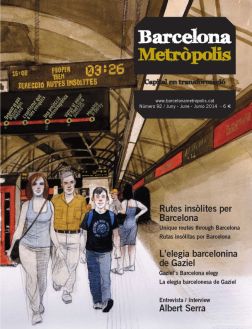
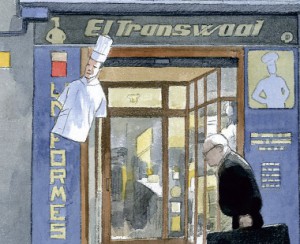
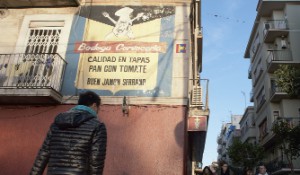
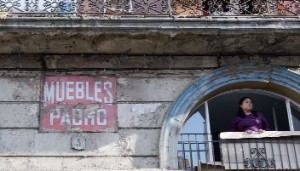
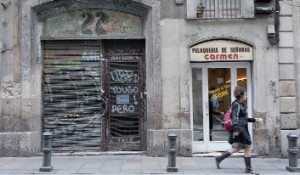
Excelente comentario y sobre todo
Gran artículo.
Felicidades! 🙂
M’ha agradat molt l’article, enhorabona Xavier!
Excelente artículo, muy claro, información muy valiosa.
Nadia Martínez